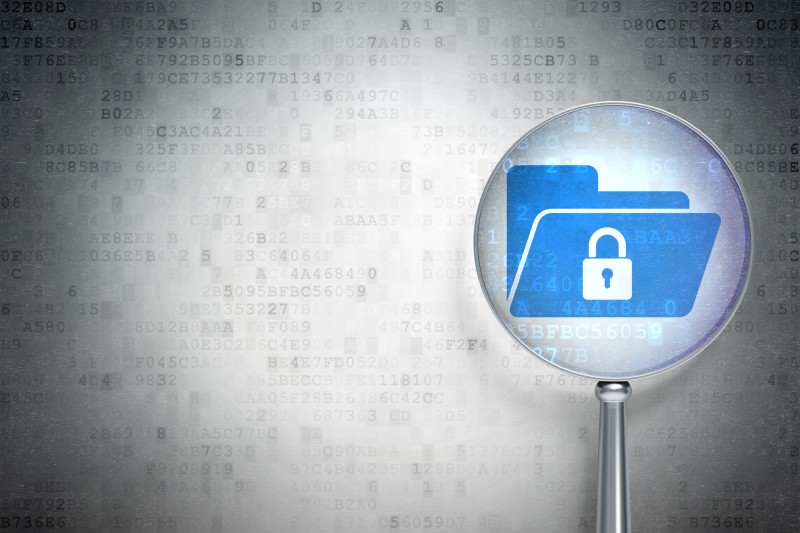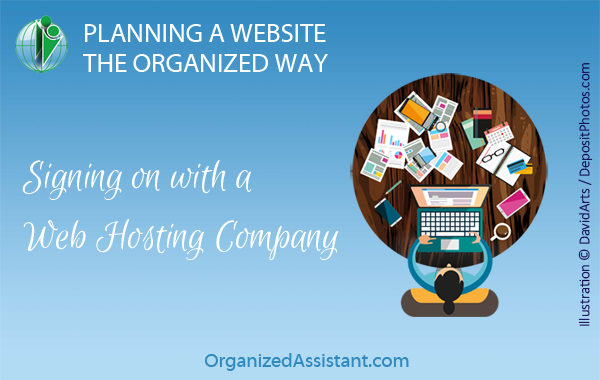Take Business Document Security to the Next Level
This page may contain links to Amazon.com or other sites from which I may receive commission on purchases you make after clicking on such links. Read my full Disclosure Policy

If you’re involved with the digitization, storage, and sharing of business documents, this information from a company who specializes in digital document management systems will be very valuable.

A company with cloud assets is extremely vulnerable to several cyber threats. Large or small – every business today includes multiple devices spread over multiple unknown networks. Take today’s widespread remote work culture, for example. Here, everyone shares countless links and documents across multiple platforms (Salesforce, Dropbox, Slack, etc), every day. With so many documents floating in the company’s cyberspace, there are high chances of emailing the wrong attachment, leaving some links open, or committing any other minor error. Suddenly, a highly sensitive document becomes accessible to everyone, eventually ending up in the wrong hands. According to Verizon, the year 2018 saw 34% of data breaches emerging from internal factors.
Once hacked, leaked, or misused, cyber threats unleash a plethora of disasters – financial, reputational, and legal . With so much at stake with document management, how can businesses ensure their data remains secure and untouched by threats?
The answer? Changing the way your documents are currently stored and shared.
Document Security in the Past vs. Document Security Now
In today’s world, documents are shared between customers, businesses, and employees endlessly in the cloud. Information occupies colossal spaces on devices and servers alike. Handling such a volume of document storage and transfers goes beyond the capacities of traditional IT security.
While sharing documents across cyberspace is incredibly easy, a non-secure way of performing these document exchanges comes at a heavy price – loss or misplacement of sensitive documents, vulnerability to cyber threats, and misuse of data.
According to Statista, the number of data breaches in the United States shot up from just 662 in 2010 to over 1,000 in 2021. This was a cue for many businesses to see the need for fail-proof, secure document management. This is when advanced and secure cloud document management systems began to emerge. These systems made it incredibly easy to not only find and share documents but also fully shield them from any possibility of cyber threats.
While several businesses, today, continue to transition into digitized document management software security, others continue to hold on to traditional methods of physical documentation and unsecured forms of file-sharing. This brings us to the question…
What Happens When your Documents are Not Protected?
Here are the negative impacts traditional methods of document management face:
- Filing cabinets are not immune to natural disasters like floods or emergencies like fire.
- The possibility of losing sensitive documents increases.
- There is a high chance of sensitive information falling into wrong hands.
- When documents fall in the wrong hands, they end up reaching the competitors.
- Businesses end up facing expensive lawsuits for not adhering to regulatory requirements of document security.
- Data breaches shoot up because attackers can easily exploit data that is not encrypted or easily accessible.
Each year, companies part of millions of dollars in losses that emerge from improper document storage. To keep these disasters at bay, it becomes critical for companies to invest in high-end document security systems.
Why Do you Need to Upgrade Your Document Security?
Sure, it’s critical for businesses to keep their sensitive information protected. But with factors like remote work, a substantial amount of daily work lives and breathes on the cloud. Customers and employees alike look forward to on-demand access to the resources of the company. In an age of widespread cloud connectivity, using a robust document security system helps companies avert debilitating threats in 4 areas:
- Piracy and Hacking. A great security system shields businesses from all forms of cyber threats regardless of how sophisticated they have become today. In doing so, this system ensures documents are not held for ransom, stolen, or sold illegally.
- Accidental losses. Without robust document security, employees can access and share the wrong documents or end up making them public – causing expensive data leaks. Document security enables selective access to files to those with specific credentials, making it impossible for data to get lost, misused, or leaked.
- Intellectual property and copyright abuse. Some document security systems harness the power of blockchain to make it impossible to edit or duplicate data without permission. Here, only the users with specific credentials can access certain sensitive documents and a single change in any document requires the approval of all the members in the network.
- Regulatory exposure. A good document security provider ensures your business complies with GDPR, HIPAA, PMI, and other regulations when it comes to storing and sharing data.
How to Kick Start Your Document Security Upgrade?
Understanding the importance of advanced document management security is not enough. Here’s how you can deploy quality document security to make your documents immune to cyber diseases:
Find a Reliable and Secure Provider
A great document security provider is more than someone who offers a digital space to store your data. Here are a few of the many services they provide:
- Maximum data protection through robust encryption methods.
- The power of blockchain to limit access and editing rights to highly sensitive documents.
- Missing a heading? These are good things “What Happens When you Protect your Documents?
- Enable bulk uploads alongside detecting any corruption of data packets during the storage or retrieval of data.
- Ensures your business complies with GDPR, HIPAA, PMI, and other regulations when it comes to storing and sharing data.
- Store countless versions of each document if needed.
- Streamlines your entire workflow and organizes all your documents with automatic indexing, tagging, and advanced filtering on metadata. This helps you and your find any document within seconds.
Digitize Historical Documents
Businesses today CANNOT not digitize their documents. Regardless of how lengthy the process might seem, shifting your data to a solid document security management will keep it protected from all kinds of threats. Make sure you sketch a plan of action for how exactly you’ll move the data from paper to digital media and sort your documents based on their importance.
Create Processes for Moving Forward
Outlining clear processes ensures you upload all the documents systematically and without losing any valuable information along the way. Instead of carrying this step in-house, it’s more beneficial to rely on a trusted partner. They will help you contain several costs and limit any risks associated with the process. In addition, a trusted provider will offer a clear-cut timeline to meet objectives and stick to them. Lastly, they will ensure your processes comply with all the federal and state regulations associated with information protection.
Final Thoughts
As discussed, between storing and accessing sensitive business documents, several things can go wrong. But upgrading to a quality document management software security system filters out any threats associated with document storage and security. With providers like SeraScript, it becomes easier than ever to seal your security up to 100%.
Graphic by maxkabakov/ DepositPhotos




This whole topic makes me feel a little sick in my stomach! Fortunately, I don’t have a lot of documents in the cloud, certainly not as part of my business. I think anyone who does needs to take this advice seriously. I’ve decided that pretty much anything is “hackable” these days, and we can’t trust that everything will just be ok. I have a lot of respect for those who are working in this industry and protect what is so valuable to all of us!
It’s scary, isn’t it?
I have a friend who refuses to do almost anything online. I get it but that’s pretty hard these days!
It is such an important topic! I am going to share this with all my small business clients. Thank you.
Thank you so much, Sabrina!
I love this topic, Janet! Thank you. I spent the first two years in the productivity business working with RIM (Records and Information Management) professionals. These brilliant people help organizations know what information they need to keep, how long to keep the info, and how to designate “owners” of business records. What I learned is that, as complex as it can be, companies must be aware of records retention requirements for the information they produce. Not everything needs to be kept! In fact, a Chief Compliance Officer once told me, “It is equally as important to discard information as it is to keep it.” I could go on and on! 🙂
I’m fascinated, Melissa! I considered a career in RIM at one time, and as a PO, paper organizing was my favourite thing. I’d love to know more of your insider secrets!
I feel like I was totally uninformed and now feel slightly informed. I don’t use the cloud for my documents or pictures. I am on some committees where we use google docs and drive. Thanks for starting to get me thinking more about this. I do keep client notes on paper for this reason. I take as little as possible personal information about my client. I don’t even know their birthdays. I’ll share it with POC Cyber Chapter.
Thanks for sharing your practices, Julie. You’ve given us something else to think about!
I’ve long believed in the cloud, but not ONLY the cloud. My personal photos are backed up in three places; my web site documents database and files in multiple places. I have relatively few documents for my business in the first place, and nothing of my clients’ personal information anywhere but my brain at all. That said, almost everyone, whether for personal or business, is probably falling down on the job when it comes to having a diligently-planned (and followed) system. Thank you for sharing this!
How do you define personal information? Surely you can’t remember everyone’s home address, for example…